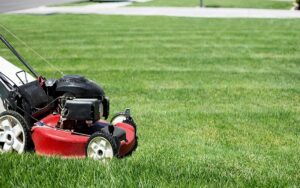Introduction
When you’re a home gardener or just want to make your lawn look nice and green, you have to deal with pests at some point. You can take the easy route and search for “tree service near me” to hire a professional and get rid of such invasive plants. Otherwise, you can take up the challenge and identify those invasive plants on your property and manage them yourself. Here’s how:
The Details
1. Purple Loosestrife – This plant is an extremely invasive perennial that is spread throughout the northeastern and Midwest United States. It can easily become a menace to both native plants and exotic plants you grow in your garden. You can distinguish the plant by its stem. They end in showy and dense flower spikes. The leaves can be 4 inches long, shaped like lances, and are arranged in triangular whorls.
To manage this plant, you can adopt both mechanical and chemical removal methods. If you decide to dig it up, you need to burn it down or send it to landfills by carefully sealing the plant. To get rid of the plant with chemicals you can use a glyphosate vegetation killer. However, keep chemical removal as the last resort since it isn’t good for the soil or other plants in your garden.
2. Japanese Spirea – Japanese Spirea is a small shrub native to Japan, China, and Korea. After being naturalized in the US, it has grown explosively and now is considered a very invasive species. One plant of this invasive species can create hundreds of tiny seeds that get dispersed by water or dirt.
You can identify Japanese Spirea with its flower clusters. The plant features pink clusters of flowers that grow on the branch ends. The plant needs to be at least four to 6 feet high and wide with these flower clusters. If the flower clusters are on shorter plants, it’s probably not Japanese spirea.
If the plant has sparsely populated your turf, repeated mowing can bring it under control. However, that doesn’t solve the problem. You need to cut the stems repeatedly every growing season to keep the plant under control. If you want to completely eradicate it, it’s best to use foliar herbicides.
3. English Ivy – The English Ivy can become excellent ground cover and that’s why it can also become an invasive plant very quickly. Due to its lush growth on plants and trees, removing it is a royal pain. To identify this plant in its juvenile form as ground cover, you need to look out for a few lobes on the leaves with light and white veins. In the adult form, the lobes combine to form one lobe as it grows up the tree.
To remove this plant manually, you need to use plenty of elbow grease and pull them out along with the stems and roots. You can also use herbicides to remove the plant. Make sure to use the herbicide on a sunny day during the winter season so that the chemicals can penetrate the waxy layer on the plant and kill it effectively.
If the ivy has invaded the bark of a tree don’t rip them out. Otherwise, the tree may be damaged due to the ivy roots firmly planted in the tree. Instead, you can start at the base and remove an inch or two of the ivy stem after cutting it. Paint those cuts carefully with a full-strength herbicide and repeat this process as you go up a few feet on the tree. This process may need to be repeated a few times to completely kill the English Ivy.
4. Kudzu – Kudzu is native to Japan and grows like a weed on steroids. It was introduced to the United States to help with erosion control and as a forage crop. However, the good intention quickly brought terrible results. To identify this plant, you need to look out for its deciduous vines that feature a yellow-green to gray woody color and can be as thick as 10 inches. The leaves are long and bristly and can grow as big as long as 6 inches.
An interesting way to get rid of this plant is by eating it. Yes, that’s right. Most of the plant is edible. Everything from the leaves and flowers to roots. Just don’t eat the vine. If you have livestock, you can allow them to graze on this plant since it is extremely nutritious.
You can also cut the stems and leave them in the soil to help fix nitrogen and enrich your soil. If the kudzu invasion has reached a drastic point of no return, you can battle it over several seasons with a brush killer that has triclopyr.
5. Chinese wisteria – Chinese Wisteria is an invasive vine that can grow up to a height of 40 feet with stems that can be as thick as 10 inches. The plant twirls around trees in a clockwise pattern and that’s a key distinguishing feature. Its leaves are also pinnately compounded and tapered at the tip with wavy edges. During the spring season, it blooms with lavender, white, and purple flowers that are very showy.
To keep Chinese wisteria under control you need to resort to vigorous pruning. You need to lightly prune the plant throughout the summer and spring season and then extensively prune it during the winter season. After removing dead or dying branches from the host tree, you also need to look out for wisteria suckers at the base of the tree.
To remove Chinese wisteria completely from your property you need to cut the wisteria and paint the cuts with herbicide. You also need to bag up and get rid of wisteria branches to eliminate new sprouts. Lightly prune it throughout the spring and summer season and extensively prune it during the winter season.
Conclusion
Apart from the invasive plants mentioned above, there are numerous more such plants you need to look out for. Identifying all those plants and managing them can be quite troublesome. Instead, you can let the professionals handle them. To hire professionals for the job search for “tree service near me”




